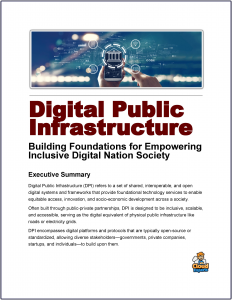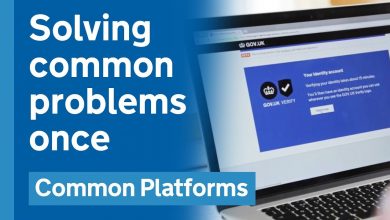 Implementing Legal Entity Identifiers (LEIs) using open-source platforms as part of a Digital Public Infrastructure (DPI) strategy involves creating a robust, transparent, and accessible system for issuing, managing, and verifying LEIs to uniquely identify legal entities participating in financial and official transactions.
Implementing Legal Entity Identifiers (LEIs) using open-source platforms as part of a Digital Public Infrastructure (DPI) strategy involves creating a robust, transparent, and accessible system for issuing, managing, and verifying LEIs to uniquely identify legal entities participating in financial and official transactions.
LEIs, based on the ISO 17442 standard, enhance transparency, reduce counterparty risk, and support regulatory compliance.
Integrating open-source platforms into a DPI framework ensures cost-effectiveness, scalability, interoperability, and alignment with the principles of open data and public good, as championed by the Global Legal Entity Identifier Foundation (GLEIF).
LEIs
LEIs, based on the ISO 17442 standard, are 20-character alphanumeric codes that uniquely identify entities like companies, funds, or government organizations, providing Level 1 data (entity details such as name and address) and Level 2 data (ownership structures).
As a foundational component of DPI—shared digital systems designed for security, interoperability, and inclusivity—LEIs enhance trust in digital transactions, streamline regulatory compliance, and support use cases like KYC, AML, cross-border payments, and digital identity verification.
Leveraging open-source platforms aligns with DPI’s principles of open standards and public good, as championed by the Global Legal Entity Identifier Foundation (GLEIF), ensuring cost-effectiveness and broad adoption.
Open Source Platform
Selecting appropriate open-source platforms and tools is critical for building an LEI system.
GLEIF provides valuable open-source resources under the CC0 license, such as Lenu, a Python library for assigning ISO 20275 Entity Legal Form codes using machine learning, and the GLEIF Level 2 Client/Server for visualizing ownership hierarchies.
Blockchain platforms like Hyperledger Fabric or Corda can support decentralized LEI issuance and vLEI integration, ensuring immutability and trust. OpenAPI can be used to build APIs for accessing GLEIF’s Global LEI Index, a public repository of LEI records available via web, API, or downloadable datasets like Golden Copy or Delta Files.
Open-source databases like PostgreSQL or MongoDB can store and query LEI data locally, while tools like Keycloak or OpenID Connect enable integration with digital identity wallets, such as the EU Digital Identity Wallet. GLEIF’s mapping tools, which link LEIs to identifiers like OpenCorporates IDs or ISINs, further enhance interoperability.
System Architecture
The system architecture should include core components like an LEI issuance module to interface with GLEIF-accredited LOUs, a verification module using GLEIF’s LEI Search API for real-time validation, and a data management module to handle Level 1 and Level 2 data in compliance with GLEIF’s Common Data File Format.
Integrating LEIs into digital certificates using open-source cryptography libraries like OpenSSL strengthens transaction security, while vLEIs, built on the KERI protocol, enable decentralized identity verification. The system should align with standards like ISO 20022 for financial messaging and support DPI components like digital wallets or supply chain platforms.
Scalability can be achieved using containerized platforms like Docker or Kubernetes, with robust security measures like encryption and decentralized identifiers (DIDs) to protect data integrity.
Use Cases
Integrating LEIs into DPI use cases unlocks significant value. In cross-border payments, embedding LEIs in ISO 20022 messages, as seen in the Bank of England’s CHAPS system, improves transparency and reduces costs. For KYC and AML compliance, LEIs streamline entity verification by linking to the Global LEI Index, potentially saving billions annually, as estimated by McKinsey.
In supply chains, LEIs support digital platforms like EBSI-ELSA for verifying entities and intellectual property rights, facilitating paperless trade. For digital identity, vLEIs enable secure authentication in systems like digital wallets, while in sustainability reporting, LEIs ensure transparency in ESG frameworks. These use cases demonstrate the versatility of LEIs in enhancing trust and efficiency across DPI applications.
Data Quality
Ensuring data quality and accessibility is paramount. GLEIF’s data quality management program, supported by monthly reports and a centralized challenge facility, helps maintain accurate LEI records.
Open-source automation can streamline annual renewals to prevent lapsed LEIs, which could disrupt compliance. The Global LEI Index should be freely accessible via APIs or web-based tools, with support for multilingual records and formats like QR codes or digital signatures to drive adoption.
Implementation and Roadmap
To bring the system to life, pilot projects can test LEI integration within DPI, such as embedding LEIs in digital wallets or supply chain platforms.
A national DPI system, for example, could use Hyperledger Fabric for decentralized issuance, PostgreSQL for data storage, and OpenAPI for LEI Search integration, automating registration, verification, and renewals while visualizing ownership data for regulators. Scaling this system globally requires leveraging GLEIF’s LOU network and open-source platforms like Kubernetes.
Challenges like interoperability with existing identifiers, data quality, or resistance to mandatory LEI use can be addressed by using GLEIF’s mapping tools, automating data updates, and demonstrating clear benefits like cost savings and faster transactions.




